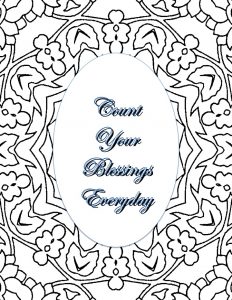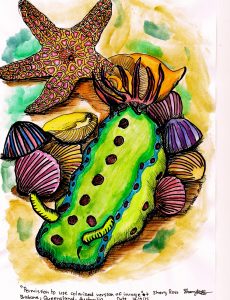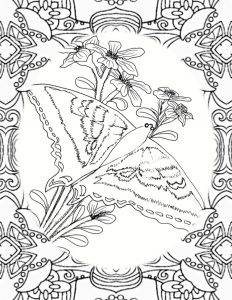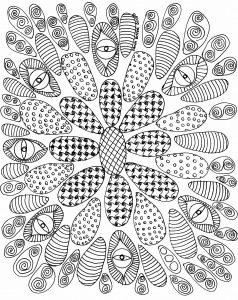Business is mostly conducted via email or phone communications.
Office hours 10:00 a.m. to 6:00 p.m, Mon. - Thurs., and 10:00 a.m. to 2:00 p.m. on Fridays.
SEND EMAIL INQUIRIES DIRECTLY TO:
Dawn.Boyer@me.com
Business is mostly conducted via email or phone communications.
Office hours 10:00 a.m. to 6:00 p.m, Mon. - Thurs., and 10:00 a.m. to 2:00 p.m. on Fridays.
SEND EMAIL INQUIRIES DIRECTLY TO:
Dawn.Boyer@me.com
Business is mostly conducted via email or phone communications.
Office hours 10:00 a.m. to 6:00 p.m, Mon. - Thurs., and 10:00 a.m. to 2:00 p.m. on Fridays.
SEND EMAIL INQUIRIES DIRECTLY TO:
Dawn.Boyer@me.com
The Dark Side of the Rainbow in the Coloring Book Industry
May 10th, 2016 by Dawn Boyer
The Adult Coloring World … does have a dark side …
The coloring trend has created an international hobby tsunami and become a phenomenally positive artistic outlet for non-artists, hobby colorists, and media practice for professional artists, as well as a new market for line art. News media writes positive, generalized articles about the adult coloring book rage for coloring promotes mindfulness health and a state of relaxation. Psychologists propose colorists can get in touch with their inner child, mentally troubled patients are calmer during coloring activities, and Alzheimer’s patients can concentrate longer with crayons in hand.

Red Lion Inn, Historic District, Reconstructed City, Williamsburg Virginia geographic area; coloring book available on Amazon
There is a darker side to the coloring industry. When the Huffington Post wrote an article about an artist reaching her one millionth coloring book sale, artists took note and realized there was a niche market for line artwork in the adult coloring book realm. When a niche market is identified by the media, everyone jumps on the gravy train and competition for the adult coloring book market dollars got fierce.
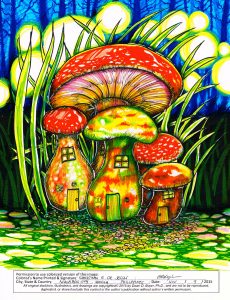
Coloring Book Cover Contest Entry by Ian DeJesus, Fairy Houses and Fairy Doors, Volume Two; available on Amazon
This is where the coloring book industry turned ugly behind the pretty façade. Talented and successful artists are seeing complaints from buyers who believed they were buying the original artist’s books, but in cheaper versions. Buyers found the less expensive books were actually pirated books coming out of sweat shops from the far east and printed on inferior paper. Popular books are copied en masse and sold on the black market as Print-On-Demand (POD) books. These imitation books are marketed on Internet-based sites to grab the quick bucks before the artist could file a cease and desist via the marketing platform for copyright infringement.
Amazon and its subsidiary for POD publishing, Create Space, do follow-up on complaints of copyright infringement. Amazon’s auto-response is to ‘suspend’ the book and notify the complainant and accuser they should ‘work it out between the two parties.’ The onus is on author or publisher to communicate with the accuser if at the receiving end of a complaint. If there is no resolution – or communication – the work (book) remains in permanent suspension. This is great for the artist if their work has been pirated – the coloring book is now off the market and pirates no longer receiving royalties for the artist’s work. This ends horribly for the author artist if they are falsely accused, even if they are the rightful owner of the copyrighted material. If the accuser refuses to follow-up the dialogue, Amazon refuses to get involved, the artist is forced to re-create the original book and obtain another ISBN number at significant cost to republish and re-market.
A second dark aspect is social media and its affinity towards negative gossip-mongering. There are over 1,400 coloring-related groups on Facebook and thousands of private and public digital image-sharing bulletin boards on Pinterest. This enables coloring hobbyists looking for coloring pages, tips and techniques, reviews of published coloring books, and coloring media to find those sources quickly. Social media also provides an outlet for naïve and purposeful pirating of artwork for other coloring enthusiasts to copy and re-share. The artist loses income via royalties with each illegal share, as well as losing potential rankings for retail placement in market sales sites. Artists have identified their original copyrighted artwork being shared (without artist’s credit or royalty payments) with the blessings of some Facebook group administrators.
To combat artwork theft and copyright infringement on Facebook, artists and coloring-related group organizers are using vigilante-methods of ethical policing to identify copyright infringers. Artist fans are taking screen shots of copyrighted art posts and coloring pages in illegally shared files, and sending proof of theft to enable the artists to file direct complaints to Facebook. Some groups have even been created to keep track of the thieves and dishonest organizers where members share infringed art.
Organizers who have a history of allowing or encouraging copyright infringement have had artists use screenshots upon which to base and file cease and desist notices under USA and/or International Copyright Law. If the organizers delete and ban the artist or the whistle-blower from a group, remaining sympathetic group members may still provide screen shots to the artist(s) for copyright infringement claims. Facebook’s Terms of Service have clear policy definitions on copyright infringement and intellectual property rights of others.[1] Facebook’s policy can include disabling the account of a repeat offender or deleting an entire group if the organizer continues to encourage, post infringed art, or assist others in copyright infringement. Facebook may also assist an artist in identifying an infringer for legal damages to deliver subpoenas.
Another psychological side-effect of social media is group-think. If a person accuses an artist as stealing artwork from other artists in a post, the comment string will grow exponentially with everyone working themselves up to an intense lather. There are reputable authors and companies using purchased stock artwork to create their coloring books, but sometimes buyers and fans of the books are not aware of this practice. When fans see the artwork in other books, they may mistakenly believe the art was stolen. Thus the author or publishing houses are falsely accused of stealing art work when they have legitimately purchased the work for use in their unique books. The accused is suddenly a pariah, without the opportunity to defend themselves if they were innocent. They may never know they have been vilified if in a group of which they are not a member. The gossip-chain rumors spread to other groups, creating a momentum sullying the reputation of the accused. This is good if the accused were guilty with documented proof provided in the initial post, but accusations without proof constantly occur.
Another off-shoot of the negative group-think is anonymous, libelous reviews on market sales sites. Some reviewers feel they need to accuse the artist author of theft of artwork or complain about the manufacturing elements of a book (dark shading, page quality, non-perforated pages over which POD authors have no control). Authors know negative commentary will not be removed from review sites. Those who complain to Amazon about libelous or defamatory wording in reviews face long delays to get the libelous review reviewed and/or removed.[2] Authors should provide a screen shot of the libelous review and the exact URL of the book and review page so the customer service representatives can identify the exact review. Once the comment is digitally deleted, it still may take up to 48 hours to finally disappear from the system. This means author-artists could potentially lose massive sales while these negative reviews are in place.
Coloring books can range in price from 99 cents for single sheet (or package sets) on pdf’s that hobbyists can download from an artist’s or a third party website to costing over $20 (USD) for some fine-art, paper-based, adult coloring books. For those who don’t want to pay for the art to color, they visit the Internet to seek free images to support their hobby. Some colorists believe any artwork found on the Internet is not only free to download and use, but also to copy and share with others. These hobbyists believe since it was on the Internet, it is free, thus not under copyright protection. They are confusing ‘free Internet access’ with ‘free to use and share’ public domain images. The Facebook copyright vigilantes are striving to educate hobbyists on the differences. Some group administrators are strict about allowing members to post images without artist and source attributions.
There are also the beggars. These colorists want free coloring pages and art supplies and will post convincing ‘sob stories’ about their inability to purchase a printer (or ink) or that their economic (or disability) circumstances doesn’t allow them to obtain even low-end coloring supplies. The irony is they use their expensive cell phones and pay for Internet data access or connections to beg for the materials. Some receive the materials from generous artists, then turn around and re-sell the materials on the second-hand market. Coloring book artists get these inquiries and turn them down, preferring to donate books to legitimate, registered, non-profits with identified goals.
There is huge potential for marketing and sales in the coloring book industry and it definitely has a dark side, which has brought out pirates, thieves, beggars, competitors, and con artists. Artists work incredibly long hours honing their skills and talents, as well as learning the digital process for POD books, to produce stunning art to entertain coloring hobbyists. It is a shame artists have to fight the dark side in keeping their reputations intact after pirated books resell on the black market; to struggle against false accusations for their art work or book quality; or having to struggle against con artists making a buck on the artist’s back.
Support the local arts community and those who create the thousands of wonderful adult coloring books on the market. If you are unsure about the origination of the artwork in the coloring books reach out to the book artist via social media – most of them are wonderfully approachable and delighted to communicate with their fans and followers. The author artist can tell the buyer which market books are legitimate and which books are black market. Support a talented artist, today!
Bio: Dawn D. Boyer, Ph.D., is the author of 105 books on the topics of business, human resources research, career search practice, women and gender study, genealogy and family lineages, quotes for motivation and self-improvement, and interview with an artist series, as well as over 40 coloring books on topics of Fairy Houses and Fairy Doors, Tropical Undersea Wonders, Sugar Skulls, Feathers A’Flying, Valentine Hearts A’Flutter, and architectural illustrations of the Historic District of Williamsburg Virginia geographic area.
Her books can be found on Amazon.com under Dawn D. Boyer, Ph.D. Follow her Author’s page at: https://www.amazon.com/author/dawnboyer
Follow her Facebook Artist page at: https://www.facebook.com/DawnBoyerArtist/
[1] www.facebook.com/terms
[2]www.amazon.com/gp/help/customer/display.html/ref=footer_cou?ie=UTF8&nodeId=508088
Readers Comments
The Dark Side of the Rainbow in the Coloring Book Industry
May 10th, 2016 by Dawn Boyer
The Adult Coloring World … does have a dark side …
The coloring trend has created an international hobby tsunami and become a phenomenally positive artistic outlet for non-artists, hobby colorists, and media practice for professional artists, as well as a new market for line art. News media writes positive, generalized articles about the adult coloring book rage for coloring promotes mindfulness health and a state of relaxation. Psychologists propose colorists can get in touch with their inner child, mentally troubled patients are calmer during coloring activities, and Alzheimer’s patients can concentrate longer with crayons in hand.

Red Lion Inn, Historic District, Reconstructed City, Williamsburg Virginia geographic area; coloring book available on Amazon
There is a darker side to the coloring industry. When the Huffington Post wrote an article about an artist reaching her one millionth coloring book sale, artists took note and realized there was a niche market for line artwork in the adult coloring book realm. When a niche market is identified by the media, everyone jumps on the gravy train and competition for the adult coloring book market dollars got fierce.

Coloring Book Cover Contest Entry by Ian DeJesus, Fairy Houses and Fairy Doors, Volume Two; available on Amazon
This is where the coloring book industry turned ugly behind the pretty façade. Talented and successful artists are seeing complaints from buyers who believed they were buying the original artist’s books, but in cheaper versions. Buyers found the less expensive books were actually pirated books coming out of sweat shops from the far east and printed on inferior paper. Popular books are copied en masse and sold on the black market as Print-On-Demand (POD) books. These imitation books are marketed on Internet-based sites to grab the quick bucks before the artist could file a cease and desist via the marketing platform for copyright infringement.
Amazon and its subsidiary for POD publishing, Create Space, do follow-up on complaints of copyright infringement. Amazon’s auto-response is to ‘suspend’ the book and notify the complainant and accuser they should ‘work it out between the two parties.’ The onus is on author or publisher to communicate with the accuser if at the receiving end of a complaint. If there is no resolution – or communication – the work (book) remains in permanent suspension. This is great for the artist if their work has been pirated – the coloring book is now off the market and pirates no longer receiving royalties for the artist’s work. This ends horribly for the author artist if they are falsely accused, even if they are the rightful owner of the copyrighted material. If the accuser refuses to follow-up the dialogue, Amazon refuses to get involved, the artist is forced to re-create the original book and obtain another ISBN number at significant cost to republish and re-market.
A second dark aspect is social media and its affinity towards negative gossip-mongering. There are over 1,400 coloring-related groups on Facebook and thousands of private and public digital image-sharing bulletin boards on Pinterest. This enables coloring hobbyists looking for coloring pages, tips and techniques, reviews of published coloring books, and coloring media to find those sources quickly. Social media also provides an outlet for naïve and purposeful pirating of artwork for other coloring enthusiasts to copy and re-share. The artist loses income via royalties with each illegal share, as well as losing potential rankings for retail placement in market sales sites. Artists have identified their original copyrighted artwork being shared (without artist’s credit or royalty payments) with the blessings of some Facebook group administrators.
To combat artwork theft and copyright infringement on Facebook, artists and coloring-related group organizers are using vigilante-methods of ethical policing to identify copyright infringers. Artist fans are taking screen shots of copyrighted art posts and coloring pages in illegally shared files, and sending proof of theft to enable the artists to file direct complaints to Facebook. Some groups have even been created to keep track of the thieves and dishonest organizers where members share infringed art.
Organizers who have a history of allowing or encouraging copyright infringement have had artists use screenshots upon which to base and file cease and desist notices under USA and/or International Copyright Law. If the organizers delete and ban the artist or the whistle-blower from a group, remaining sympathetic group members may still provide screen shots to the artist(s) for copyright infringement claims. Facebook’s Terms of Service have clear policy definitions on copyright infringement and intellectual property rights of others.[1] Facebook’s policy can include disabling the account of a repeat offender or deleting an entire group if the organizer continues to encourage, post infringed art, or assist others in copyright infringement. Facebook may also assist an artist in identifying an infringer for legal damages to deliver subpoenas.
Another psychological side-effect of social media is group-think. If a person accuses an artist as stealing artwork from other artists in a post, the comment string will grow exponentially with everyone working themselves up to an intense lather. There are reputable authors and companies using purchased stock artwork to create their coloring books, but sometimes buyers and fans of the books are not aware of this practice. When fans see the artwork in other books, they may mistakenly believe the art was stolen. Thus the author or publishing houses are falsely accused of stealing art work when they have legitimately purchased the work for use in their unique books. The accused is suddenly a pariah, without the opportunity to defend themselves if they were innocent. They may never know they have been vilified if in a group of which they are not a member. The gossip-chain rumors spread to other groups, creating a momentum sullying the reputation of the accused. This is good if the accused were guilty with documented proof provided in the initial post, but accusations without proof constantly occur.
Another off-shoot of the negative group-think is anonymous, libelous reviews on market sales sites. Some reviewers feel they need to accuse the artist author of theft of artwork or complain about the manufacturing elements of a book (dark shading, page quality, non-perforated pages over which POD authors have no control). Authors know negative commentary will not be removed from review sites. Those who complain to Amazon about libelous or defamatory wording in reviews face long delays to get the libelous review reviewed and/or removed.[2] Authors should provide a screen shot of the libelous review and the exact URL of the book and review page so the customer service representatives can identify the exact review. Once the comment is digitally deleted, it still may take up to 48 hours to finally disappear from the system. This means author-artists could potentially lose massive sales while these negative reviews are in place.
Coloring books can range in price from 99 cents for single sheet (or package sets) on pdf’s that hobbyists can download from an artist’s or a third party website to costing over $20 (USD) for some fine-art, paper-based, adult coloring books. For those who don’t want to pay for the art to color, they visit the Internet to seek free images to support their hobby. Some colorists believe any artwork found on the Internet is not only free to download and use, but also to copy and share with others. These hobbyists believe since it was on the Internet, it is free, thus not under copyright protection. They are confusing ‘free Internet access’ with ‘free to use and share’ public domain images. The Facebook copyright vigilantes are striving to educate hobbyists on the differences. Some group administrators are strict about allowing members to post images without artist and source attributions.
There are also the beggars. These colorists want free coloring pages and art supplies and will post convincing ‘sob stories’ about their inability to purchase a printer (or ink) or that their economic (or disability) circumstances doesn’t allow them to obtain even low-end coloring supplies. The irony is they use their expensive cell phones and pay for Internet data access or connections to beg for the materials. Some receive the materials from generous artists, then turn around and re-sell the materials on the second-hand market. Coloring book artists get these inquiries and turn them down, preferring to donate books to legitimate, registered, non-profits with identified goals.
There is huge potential for marketing and sales in the coloring book industry and it definitely has a dark side, which has brought out pirates, thieves, beggars, competitors, and con artists. Artists work incredibly long hours honing their skills and talents, as well as learning the digital process for POD books, to produce stunning art to entertain coloring hobbyists. It is a shame artists have to fight the dark side in keeping their reputations intact after pirated books resell on the black market; to struggle against false accusations for their art work or book quality; or having to struggle against con artists making a buck on the artist’s back.
Support the local arts community and those who create the thousands of wonderful adult coloring books on the market. If you are unsure about the origination of the artwork in the coloring books reach out to the book artist via social media – most of them are wonderfully approachable and delighted to communicate with their fans and followers. The author artist can tell the buyer which market books are legitimate and which books are black market. Support a talented artist, today!
Bio: Dawn D. Boyer, Ph.D., is the author of 105 books on the topics of business, human resources research, career search practice, women and gender study, genealogy and family lineages, quotes for motivation and self-improvement, and interview with an artist series, as well as over 40 coloring books on topics of Fairy Houses and Fairy Doors, Tropical Undersea Wonders, Sugar Skulls, Feathers A’Flying, Valentine Hearts A’Flutter, and architectural illustrations of the Historic District of Williamsburg Virginia geographic area.
Her books can be found on Amazon.com under Dawn D. Boyer, Ph.D. Follow her Author’s page at: https://www.amazon.com/author/dawnboyer
Follow her Facebook Artist page at: https://www.facebook.com/DawnBoyerArtist/
[1] www.facebook.com/terms
[2]www.amazon.com/gp/help/customer/display.html/ref=footer_cou?ie=UTF8&nodeId=508088








